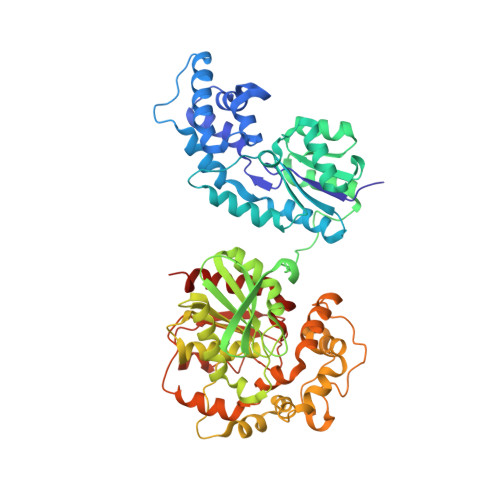Optimized inhibitors of soluble epoxide hydrolase improve in vitro target residence time and in vivo efficacy.
Lee, K.S., Liu, J.Y., Wagner, K.M., Pakhomova, S., Dong, H., Morisseau, C., Fu, S.H., Yang, J., Wang, P., Ulu, A., Mate, C.A., Nguyen, L.V., Hwang, S.H., Edin, M.L., Mara, A.A., Wulff, H., Newcomer, M.E., Zeldin, D.C., Hammock, B.D.(2014) J Med Chem 57: 7016-7030
- PubMed: 25079952
- DOI: https://doi.org/10.1021/jm500694p
- Primary Citation of Related Structures:
4OCZ, 4OD0 - PubMed Abstract:
Diabetes is affecting the life of millions of people. A large proportion of diabetic patients suffer from severe complications such as neuropathic pain, and current treatments for these complications have deleterious side effects. Thus, alternate therapeutic strategies are needed. Recently, the elevation of epoxy-fatty acids through inhibition of soluble epoxide hydrolase (sEH) was shown to reduce diabetic neuropathic pain in rodents. In this report, we describe a series of newly synthesized sEH inhibitors with at least 5-fold higher potency and doubled residence time inside both the human and rodent sEH enzyme than previously reported inhibitors. These inhibitors also have better physical properties and optimized pharmacokinetic profiles. The optimized inhibitor selected from this new series displayed improved efficacy of almost 10-fold in relieving pain perception in diabetic neuropathic rats as compared to the approved drug, gabapentin, and previously published sEH inhibitors. Therefore, these new sEH inhibitors could be an attractive alternative to treat diabetic neuropathy in humans.
Organizational Affiliation:
Department of Entomology and Nematology, UCD Comprehensive Cancer Center, University of California Davis , One Shields Avenue, Davis, California 95616, United States.

















